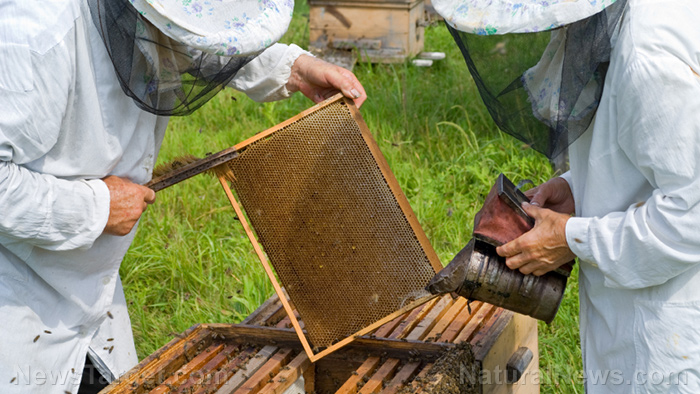
The move came after the EPA failed to act on a legal rulemaking petition filed by the group in 2017 informing them of the loophole. They were required by law to answer the petition but never did.
Neonicotinoids are a type of pesticide that is known to be highly toxic to insects such as bees. They are the most widely used class of pesticides in the United States right now despite being so dangerous that the European Union banned three of the most common chemicals in this family for outdoor use in 2018.
Neonicotinoids are widely used to treat seeds, with crops grown from these seeds estimated to cover more than 150 million acres of American farmland each year. In 2011, more than 79 percent of the nation's corn and 30 percent of its soybeans came from seeds that had been treated with neonicotinoids.
According to the National Resources Defense Council's Daniel Raichel, just one corn seed that has been treated with neonicotinoids contains enough of the active ingredient to kill a quarter of a million bees. Moreover, a recent study revealed that one common neonicotinoid is capable of reducing bee populations for several generations.
Unfortunately, the dangers of these chemicals are not just confined to the seeds that are treated with them. In fact, more than 80 percent of the pesticides are able to leave the seed and pollute the air, water and soil surrounding them. Those that remain in the seed end up being taken into the plant itself, making their way into the leaves and nectar. When the plants are consumed by bees, birds and other pollinators, the chemicals attack their central nervous system, harming their ability to navigate and learn and leading to paralysis and even death.
Pesticides impact several generations of bees
A study from the University of California, Davis, found that repeated exposure to certain pesticides like neonicotinoids can have an additive effect that gets worse after multiple exposures and could require several generations to recover. The study looked at the North American blue orchard bee, an important pollinator of agricultural products such as fruit trees, to study how it was affected by the popular neonicotinoid imidacloprid.
They found that female bees who were exposed to the chemical as larvae experienced a 20 percent drop in the number of offspring they produced. However, when they were exposed later as adults, the same bees that had previously been exposed to it had a total drop of 44 percent fewer offspring. This indicates the effects of the chemical are additive, and it is particularly concerning when you consider that many bees who are exposed to harmful pesticides are exposed repeatedly rather than just once. In addition, neonicotinoids like imidacloprid have a very long persistence in soil. It's a dangerous situation for bee species that are already suffering from a lack of food resources, and it could put our food supply at risk.
Neonicotinoids have been under scrutiny for a long time for their scientifically documented role in causing the decline of honeybee populations, and newer evidence shows they also harm a wide range of wildlife, including birds and deer, in addition to having adverse effects on human health.
Sources for this article include:
Please contact us for more information.























